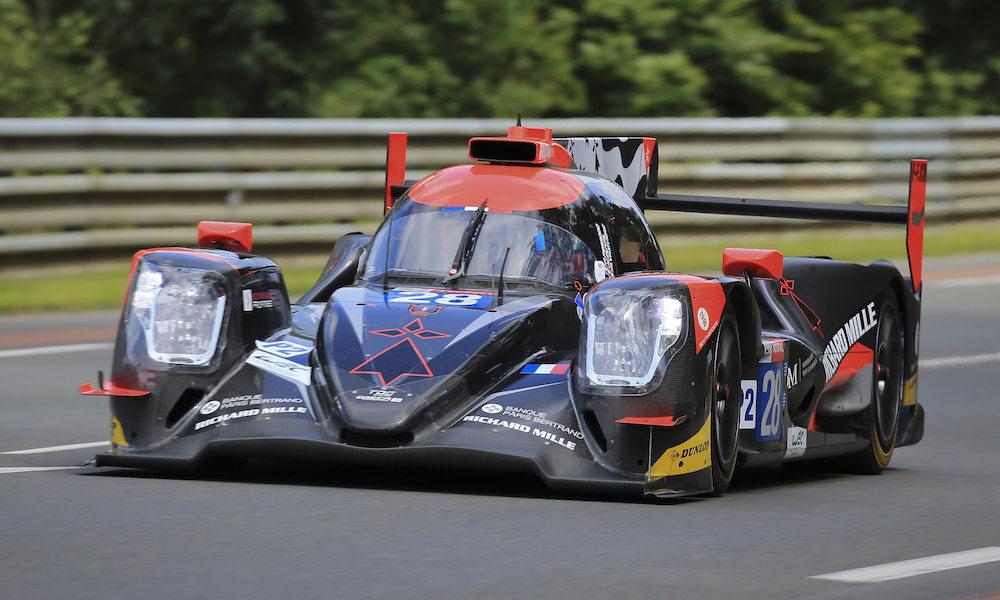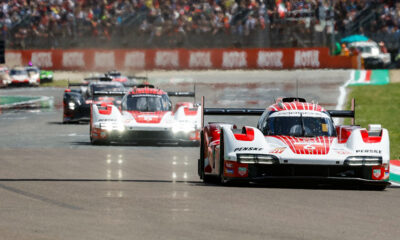
Photo: MPS Agency
LMP2 teams will be “disappointed” if their cars are made slower to fit in with the new top-level prototype regulations, according to TDS Racing team principal Xavier Combet.
Target lap times for the proposed Hypercar class have been gradually increased to 3:30 in recent months, while the fastest race lap for an LMP2 car in last year’s 24 Hours of Le Mans was a 3:27.200 set by Nathanael Berthon.
The current LMP2 regulations were introduced under a four-year cycle which is set to expire at the end of the 2020-21 WEC season, meaning there will be at least one season of co-habitation with Hypercar.
Combet, whose team has competed in ACO-sanctioned LMP2 competition since 2011, told Sportscar365 that the rule makers need to take LMP2 into account when defining the new formula.
Discussions regarding the shape of the Hypercar category are reaching a critical stage, with a key technical working group meeting set to take place tomorrow.
“I am interested to see how the ACO will manage the gap between LMP2 and Hypercar,” said Combet.
“It’s a bit early, but I heard that LMP2 will keep the same level as we have now, even if we can imagine that’s not possible looking at what they say [for target lap times]
“Before the last spec of the LMP2 we had the other [spec], and they said they wanted to increase the performance.
“Everybody bought these cars, the Oreca 07 and the new Ligier, with improved speed, and of course to have the better lap times in the end.
“Now, I hope that they will keep that thought in mind because we have invested a lot. I will be a bit… not worried, but disappointed if we are to reduce the speed again.”
Combet suggested that conceding LMP2 performance would have an inevitable knock-on effect for the GTE class, as well as championships extending beyond the WEC.
“If they reduce the speed on the LMP2 in general, from WEC, that means that they will have to reduce the speed of LMP2 in the ELMS and then what will they do in LMP3?” he said.
“In GTE as well: we remember that in the past, the GTEs were close to the LMP2s in top speed. That’s why they had to increase the top speed of LMP2.
“I can imagine it’s not really easy to manage, to be honest. I’m not saying they are doing wrong things. But in my point of view, I hope that LMP2 will keep the same performance.
“It’s really important for the spirit of LMP2 racing.”
Combet added that reducing the performance of LMP2 cars would undo much of the work that had been laid out in the 2017 regulations to make the category faster.
The quickest LMP2 lap time at Le Mans dropped by a staggering eight seconds from 2016 to 2017 after the introduction of the current cost-cutting formula, which is based around four chassis types and a spec Gibson V8 engine.
Representatives from two of the four designated chassis manufacturers, Oreca and Ligier, have already advocated for stability in the 2021-22 LMP2 regs.
“At Le Mans, we can have access to the main podium,” said Combet, referring to Jackie Chan DC Racing’s second and third-place overall finishes in 2017.
“It’s always difficult to ask somebody to get used to being fast on track. Say, OK, we have to reduce the speed. We are doing a competition and we want to get faster and faster.
“If they say we have to reduce the speed, I will be disappointed on the sporting side and the commercial side. We paid to have some improvement, so we have to keep it.”






















